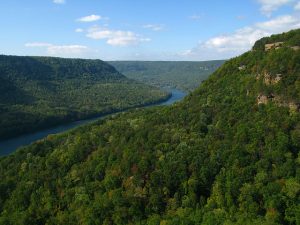A New Publication on Forest Resilience to Climate Change and Urbanization

A team of North Carolina State University, including SE CSC’s own postdoctoral associate Jennifer Costanza, and research scientist Adam Terando, as well as many USGS researchers authored the recently released article, “Modeling climate change,urbanization, and fire effects on Pinus palustris ecosystems of the southeastern U.S.” in the Journal of Environmental Management. It explores the impact of climate change and urbanization on fire-dependent ecosystems and demonstrates the importance of accounting for multiple relevant anthropogenic threats in an ecosystem-specific context in order to facilitate more effective management actions.
Abstract
Managing ecosystems for resilience and sustainability requires understanding how they will respond to future anthropogenic drivers such as climate change and urbanization. In fire-dependent ecosystems, predicting this response requires a focus on how these drivers will impact fire regimes. Here, we use scenarios of climate change, urbanization and management to simulate the future dynamics of the critically endangered and fire-dependent longleaf pine (Pinus palustris) ecosystem. We investigated how climate change and urbanization will affect the ecosystem, and whether the two conservation goals of a 135% increase in total longleaf area and a doubling of fire-maintained open-canopy habitat can be achieved in the face of these drivers. Our results show that while climatic warming had little effect on the wildfire regime, and thus on longleaf pine dynamics, urban growth led to an 8% reduction in annual wildfire area. The management scenarios we tested increase the ecosystem’s total extent by up to 62% and result in expansion of open-canopy longleaf by as much as 216%, meeting one of the two conservation goals for the ecosystem. We find that both conservation goals for this ecosystem, which is climate-resilient but vulnerable to urbanization, are only attainable if a greater focus is placed on restoration of non-longleaf areas as opposed to maintaining existing longleaf stands. Our approach demonstrates the importance of accounting for multiple relevant anthropogenic threats in an ecosystem-specific context in order to facilitate more effective management actions.
Read more.
